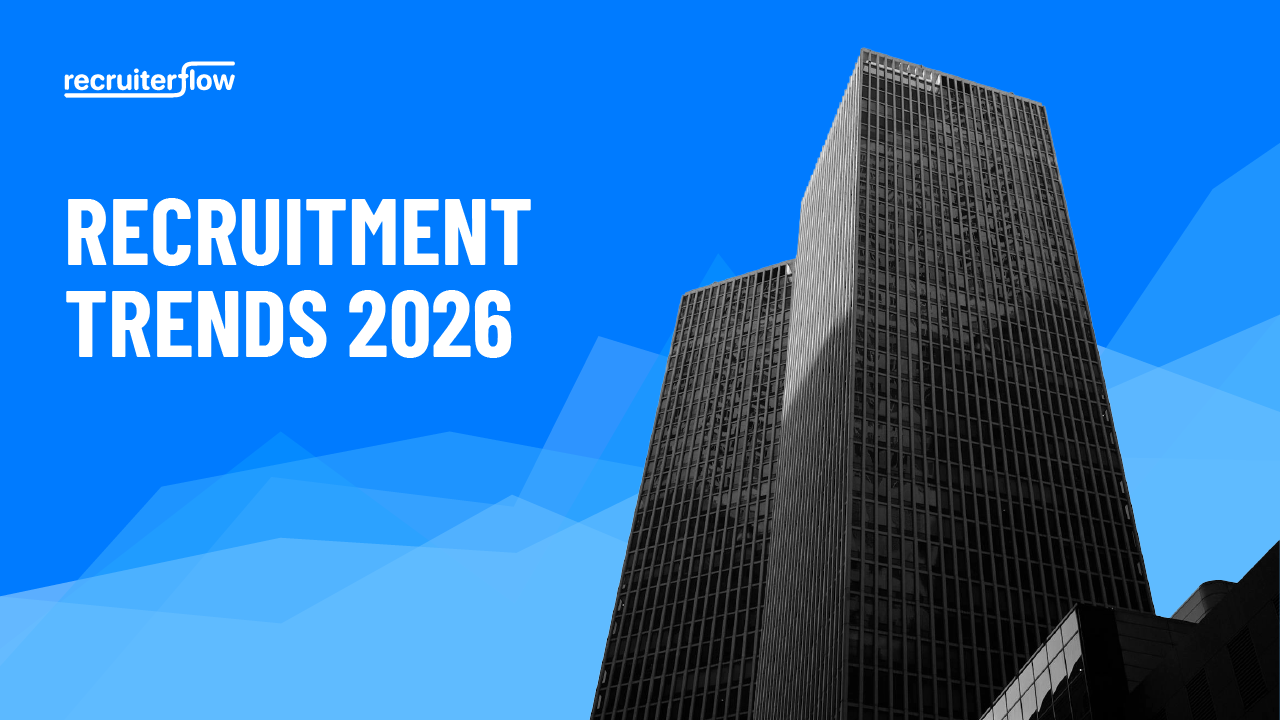
The Ultimate Guide to Time to Hire

Agency recruiters can determine their efficiency and effectiveness by measuring the time to hire metric. This metric represents the full recruitment process from job creation to candidate employment.
The guide explores the essence of Time to Hire, explains how it differs from other metrics, and presents effective strategies and tools to minimize it.
The purpose is to provide agencies with practical knowledge that helps them optimize operations while building stronger client connections and efficiently secure top candidates.
What is Time to Hire?
Time to Hire functions as an essential recruitment metric that calculates the duration from when a candidate applies to when they accept the job offer.
This metric monitors the duration required to advance a candidate from application submission to job acceptance. When a candidate applies on June 10th and accepts the job offer on June 28th, your time to hire is 18 days.
Your agency’s recruiting efficiency is directly measured by this metric. A short time to hire indicates your company can move candidates through the screening stage and interviews to an offer stage at a high speed. Long time to hire signals potential bottlenecks or inefficiencies within your hiring process.
The importance of time to hire goes beyond merely achieving faster results. A faster time to hire usually means:
- Competitors have fewer opportunities to capture your top candidates when you hire them quickly.
- Lower cost of vacancy for your clients
- A quicker hiring process enhances candidate experience because candidates dislike waiting weeks for feedback.
- Your agency develops a stronger reputation among clients by demonstrating its capability to make swift decisions and deliver efficient service.
Time to Hire vs. Time to Fill
The two terms often get confused, yet they represent distinct concepts. Let’s clear it up:
| Metric | Start Point | End Point | What It Measures |
| Time to Hire | When a candidate applies | When a candidate accepts the offer | Candidate’s journey through your hiring process |
| Time to Fill | When the job requisition is approved | When a candidate accepts the offer | The entire hiring process, including pre-advertising |
Time to Hire measures the speed at which candidates progress from submitting their application to accepting your job offer. It evaluates the speed and effectiveness of your recruitment process after identifying qualified job applicants.
Time to Fill is broader. Time to Fill begins when your client or hiring manager approves the job requisition for a new role and concludes when the candidate accepts the job offer.
The entire process covers job approval through job description creation, ad posting, sourcing candidates, interviewing, and finally concluding with hiring.
Also read: Time to Hire vs Time to Fill: Key Differences & How to Improve These Metrics
Why the Distinction Matters for Agencies
The distinction between Time to Hire and Time to Fill creates important consequences for recruitment agencies.
Strategic Planning
Time to Fill enables clients and recruitment agencies to predict the time it will take to secure essential positions. Organizations can improve project planning and manage seasonal hiring needs through this valuable foresight.
Identifying Delays
Time to Fill reveals recruitment inefficiencies that happen before applicant submissions by recognizing extended job description approvals and poor sourcing approaches. Time to Hire identifies bottlenecks that arise during candidate evaluation as well as the offer extension phase.
Cost Implications
Vacant roles each day may cause project delays while increasing current employee workloads and diminishing client productivity. Through monitoring Time to Fill, organizations can reduce the financial impact of extended vacancies, which includes expenses from prolonged job postings and overtime work as well as turnover caused by employee burnout.
How to Calculate Time to Hire
Practically, calculating time to hire is straightforward yet depends on maintaining detailed records. First, decide what events define your timeline. You should document the application or sourcing date of a candidate as Day X and the offer acceptance date as Day Y.
Here’s the formula to calculate Time to Hire:
Time to Hire = Day Y (offer accepted) – Day X (applied).
Time to hire equals the date the candidate accepted the offer minus the date they joined the hiring pipeline.
To understand Time to Hire better, consider a job listing that appeared on May 1. The candidate submitted their application on May 10 before going through an interview on May 15 and accepting the job offer on May 28. The candidate accepted the offer on Day 28 and applied on Day 10, resulting in 18 days to hire. Repeat for each hire in a period.
Calculate your average hiring time by summing up all hire durations and dividing by the total number of hires. The average time to hire for five employees who took 15 days, 12 days, 16 days, 8 days, and 17 days, respectively, calculates to 13.6 days (15+12+16+8+17)/5.
Organizations track median values to mitigate the effects of outliers in their data. Measuring time-to-hire on a departmental or role-specific basis helps avoid skewed results from high-volume teams that affect overall company averages.
Average Time to Hire by Industry (2025 Data)
The duration required to hire employees shows significant variation across different industries, as well as geographic regions and job classifications.
LinkedIn’s 2024-2025 recruitment report estimated that the average time-to-hire in the U.S. stands at approximately 36 days from job posting to offer, yet this timeframe might differ according to different surveys.
The 2024 StandOut CV research study found the UK recruitment process took 34 days from application submission to final offer acceptance.
However, certain sectors are much slower. The survey showed that public sector/government jobs took about 6 weeks (~42 days) to hire because of security clearances and bureaucracy, while hotel & catering roles took much less time at about 3.9 weeks (~27 days).
Josh Bersin’s HR research indicates that worldwide hiring typically takes 44 days, according to their 2023 data.
Some fields are outliers. According to Bersin’s research data, energy and defense positions take approximately 67 days to fill, while professional services roles typically require about 47 days.
Positions that require less specialized skills to fill, like retail and some IT roles, tend to have shorter recruitment times. The time to fill positions in retail and some IT jobs tends to be much shorter than in other fields.
In summary, current data suggests that hiring typically takes between 6 to 7 weeks globally, while UK companies fill positions in about 5 weeks and U.S. organizations take 5 to 6 weeks, with significant differences depending on the industry.
Organizations should employ these metrics as benchmarks while concentrating on identifying trends and making comparisons specific to their sector. For example:
- Tech & Engineering: Research shows that hiring for software and engineering roles typically requires between 40 and 50 days.
- Financial Services: Around 40–45 days in the U.S.
- Healthcare & Pharma: The hiring process in Healthcare & Pharma takes about 49–67 days to complete in the U.S. and UK due to strict regulatory requirements.
- Hospitality/Retail: Hospitality/Retail stands out for speed, with many surveys reporting hiring duration under 30 days.
Why Time to Hire Matters for Recruitment Agencies
Time to hire is a critical performance indicator for recruitment agencies and understandably so. When a position stays vacant beyond its needed time frame, it not only diminishes your reputation but also drains client resources through productivity loss and overtime payments.
Clients become happy with swift hires while delays trigger their anxiety. According to survey results, nearly 30% of hiring managers admit to losing their top choice for a position because of lengthy recruitment timelines.
The best talent moves quickly through the job market and stops receiving offers from multiple sources within ten days of their initial search. Delays in hiring processes expose your client to the risk that candidates will accept other job offers.
Agencies that streamline hiring stand out. Agencies that quickly place people build customer loyalty while avoiding the hidden financial losses associated with job vacancies.
A Randstad case study shows that a global client experienced a 100+ day hiring average with multiple suppliers until they adopted an RPO program, which reduced hiring time by 30% and increased their offer acceptance rate to 79%.
A staffing firm enhanced its hiring throughput by using rapid pre-screening tests, which resulted in a 53% speedier hiring process and reduced interview hours by 75% for each hire.
The presented real-world examples demonstrate how shortened hiring timelines can determine whether an agency retains a client’s candidate against competing firms.
Put simply, fast hiring wins deals. The speed of agency operations to place candidates becomes critical for client assessments beyond successful placement outcomes.
When hiring occurs swiftly, it enhances candidate experience because clients associate the efficiency of the process with your agency’s brand reputation.
In 2025, candidates increasingly expect a frictionless journey. When hiring processes involve slow communication along with cumbersome forms and prolonged interviews, trust is reduced, and the hiring timeline extends. Reducing hiring time maintains candidate engagement while raising acceptance rates.
Strategies to Reduce Time to Hire
Reducing time to hire requires an intentional strategy. Here are the best strategies to reduce time to hire:
Build and leverage talent pipelines
Don’t start each search from zero. Use an ATS/CRM system to keep a record of previous candidates along with qualified leads. An AI-first ATS like Recruiterflow holds previously qualified candidates who reached final interview stages or submitted applications after a position closure. Keep these candidates warm with periodic outreach.
Encourage referrals. By utilizing employee networks through a well-designed referral program, you can expedite the sourcing process.
Build a pipeline of pre-screened passive talent through LinkedIn and networking for immediate availability when new roles become available. These actions can reduce the hiring timeline by eliminating the wait time associated with posting job listings.
Streamline the interview process
Excess rounds or disorganization are common hold-ups. Collaborate with your client to reduce unnecessary interview rounds.
Use technology to speed scheduling. Scheduling through AI tools combined with one-way video interviews can significantly reduce delay periods between different hiring phases.
Utilize initial assessments through skills tests and phone screenings to select the top candidates for full interviews. Create clear scorecards that allow interviewers to quickly assess candidate fit without debating unclear impressions.
Move decisions quickly
Clients often experience the majority of delays in the hiring process. Prompt hiring managers to take immediate action following interviews. Recommend that hiring managers schedule immediate feedback meetings and establish decision timelines beforehand.
Top candidates are unpredictable because they might take other job offers within days. Use data to motivate speed. Extended hiring delays result in both financial losses and candidate withdrawal.
Let them know that delivering value means quickly filling the role you are recruiting for. A number of agencies have added “time to hire” clauses to their SLAs or reports to ensure the metric remains visible to all parties.
Focus on candidate experience
When candidates experience a smooth journey, they move through the hiring process faster, which results in higher offer acceptance rates. Maintain prompt communication by answering inquiries within 24–48 hours, and make application forms succinct and mobile-friendly while ensuring assessments stay relevant.
Candidates receive updates about next steps through chatbots and text messaging services. Personalize interactions so candidates stay engaged. Candidate progression speeds up directly when the hiring process becomes smoother by removing any obstacles.
Use data to find bottlenecks
Examining hiring duration at each stage helps reveal process delays. Break down your cycle (e.g., Segment your hiring timeline into individual stages such as application to screening, then interview to offer, and accept to detect delays in each part.
Assess each hiring stage’s time consumption to identify the longest duration. If you need two weeks to schedule interviews, it is beneficial to purchase an interview scheduling tool.
Implement pre-approval templates or upgrade your contract process when offer approvals take too long. Regular reports on a weekly or monthly basis allow you to identify growing delays and evaluate potential solutions.
Leverage technology and automation
AI-powered recruitment platforms accelerate task completion rates. Major ATS/CRMs such as Recruiterflow or Workable let you automate tracking time-to-hire metrics and send follow-up reminders.
Bardwood, a leading recruitment firm in the UK, reduced its time to hire by 50% after adopting Recruiterflow’s AI recruiting platform. Its recruiters now spend 70% less time on admin tasks.
Scheduling apps (e.g., The function of Calendly in synchronizing with your calendar) eliminate repetitive email exchanges. Your career site chatbots provide answers to candidate queries around the clock to maintain their progress.
AI-powered resume-screening tools with pre-defined filters enable recruiters to identify top candidates immediately. Basic email templates and offer letter generators save many hours of time.
Utilize specific tools such as voice/video interviewing platforms like SparkHire and HireVue, together with skills assessment services such as Criteria and Codility, and analytics dashboards like Power BI and Tableau to streamline processes and monitor outcomes.
Apply pre-screening assessments
Research demonstrates how implementing cognitive or skills assessments saves time during recruitment. A staffing firm implemented online assessments for candidate pre-qualification, which reduced their interview pool to 2–3 candidates per hire from the previous 12. The staffing firm experienced a 53% reduction in time-to-hire alongside a 75% decrease in interview hours.
Early identification of top candidates helps eliminate time spent on unproductive interviews. Numerous agencies implement coding tests, language exams, and aptitude assessments to achieve this goal.
Streamline or outsource processes
When internal capacity presents a problem, agencies should explore RPO or MSP options.
Many agencies collaborate with RPO groups to manage bulk hiring or specialized recruitment, which enables them to fill positions much more rapidly. Selecting one or two trusted agency vendors improves coordination and speed even without using RPO services.
Tools & Metrics to Track Time to Hire
Agencies maintain control over time-to-hire metrics by combining software applications and performance indicators. Built-in analytics for these recruiting metrics are standard features in most applicant tracking systems (ATS) and recruiting CRM platforms.
The reporting suite of Recruiterflow provides dashboards that track both time-to-hire and time-to-fill metrics. Greenhouse and Lever, along with other ATSs, monitor the duration candidates remain in each hiring stage.
Apart from ATS systems, numerous agencies utilize Power BI and Tableau to display hiring data across periods or different teams. You can track average time-to-hire on a monthly basis to identify trends or analyze it separately by client and job function.
Certain teams develop their own dashboards, which trigger alerts if the time required to fill a role surpasses a set limit.
Productivity tools also help. Mobile applications and chatbots designed for recruiting help teams maintain alignment while sustaining quick movement towards hiring goals.
Interview scheduling software like Calendly and GoodTime proves helpful alongside tools that track hiring metrics. The systems for interview scheduling (Calendly, GoodTime), video interviewing (Zoom, SparkHire), and skill evaluations (HackerRank, Criteria Corp) enable automatic timestamping of candidate progression.
Key metrics to monitor alongside time-to-hire include:
- Time in each stage (screening, interview, offer)
- The offer acceptance rate reveals whether candidates tend to reject fast offers.
- Candidate drop-off rate (applications started vs. completed)
Tracking these helps diagnose problems. For example, a high drop-off rate suggests that lengthy application processes contribute to a longer time-to-hire.
Several leading agencies monitor recruiter and hiring manager response time as well as candidate experience ratings. Top agencies measure recruiter and hiring-manager responsiveness via metrics such as average days to first interview, as well as candidate experience scores, because these metrics commonly show correlation with time-to-hire.
Track when hires apply and accept positions, then calculate how long that process takes. The important thing is consistency. You should consistently update metrics for each filled position, regardless of whether you use advanced software or a Google Sheet.
Over time, you’ll develop benchmarks (e.g., our goal is to complete engineering hires in under 30 days, and we will regularly update leadership or clients about our progress.
Learn How Our AI-Powered Recruitment Platform Can Help Your Agency

Recruiterflow is an all-in-one AI recruitment software that serves as a command center for all your agency’s recruitment operations:
- AI-first screening and sourcing tools
- AI recruiting assistant
- Unified ATS & CRM
- Centralized candidate database
- Automated, multi-channel outreach (Email, SMS, Call & Socials)
- No-code recruiting automation
- Data enrichment capabilities
- Advanced reporting and analytics
- Open APIs and a host of integrations
Hudson B., CEO & Founder, reviewed us on G2Crowd:
“We’ve been using RecruiterFlow for the past two years and it has streamlined our recruiting process. The platform has a user-friendly interface and automation tools that help us efficiently manage candidate pipelines, reduce manual tasks, and communicate with clients. It serves as the command center for our recruiting operation, allowing us to focus on building relationships. They have exceptional customer success, are quick to assist, eager to hear feedback, and committed to product development. I recommend it to any agencies looking to optimize their workflows.”
See it in action now: Book a free demo
Recruitment





Pragadeesh Natarajan